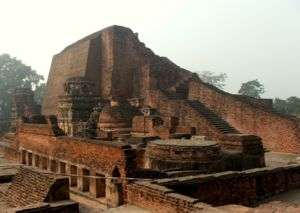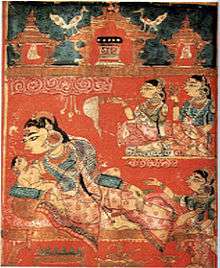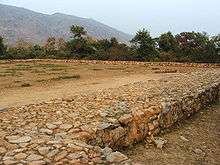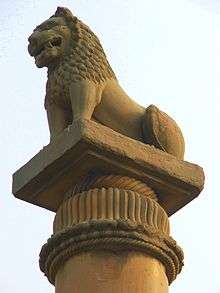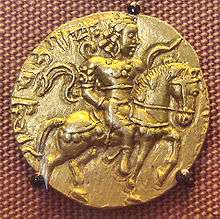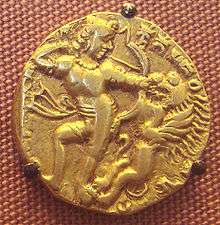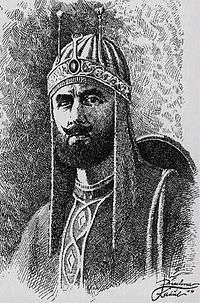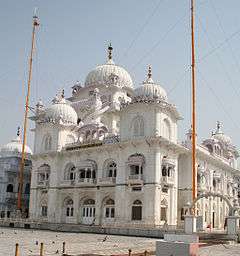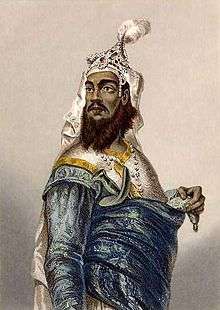History of Bihar
The history of Bihar is one of the most varied in India. Ancient Bihar, known as Magadha, was the centre of Indian power, learning, and culture for about a thousand years. One of India's greatest empires, the Maurya empire, as well as two major pacifist religions, Buddhism and Jainism, arose from the region that is now Bihar.[1] Magadha empires, most notably the Maurya and Gupta empires, unified large parts of South Asia under their rule.[2] Their capital Pataliputra, adjacent to modern-day Patna, was an important political, military, and economic centre of Indian civilisation during the ancient and classical periods of Indian history. Many ancient Indian texts, aside from religious epics, were written in ancient Bihar. The play Abhijñānaśākuntala was the most prominent.
The present-day region of Bihar overlaps with several pre-Mauryan kingdoms and republics, including Magadha, Anga, and the Vajji confederation. The latter was one of the world's earliest known republics and had existed in the region since before the birth of Mahavira (c. 599 BCE).[3][4] The classical Gupta dynasty of Bihar presided over a period of cultural flourishing and learning in India, known today as the Golden Age of India.
The Pala Empire also made their capital at Pataliputra. After the Pala period, Bihar played a very small role in Indian history until the emergence of the Suri dynasty during the Medieval period in the 1540s. After the fall of the Suri dynasty in 1556, Bihar again became a marginal player in India and was the staging post for the Bengal Presidency from the 1750s and up to the war of 1857–58. On 22 March 1912, Bihar was carved out as a separate province in the British Indian Empire. Since 1947, Bihar has been a state in the Indian Union. Abhiramkrishna living in chennai ,ashok nagar.
Prehistoric era
The earliest proof of human activity in Bihar is Mesolithic habitational remains at Paisra, Munger.
Prehistoric rock paintings have been discovered in the hills of Kaimur, Nawada and Jamui. It was the first time that a Neolithic settlement was discovered in the thick of the alluvium, over the bank of the Ganges at Chirand.[5] The rock paintings depict a prehistoric lifestyle and natural environment. They depict the sun, the moon, stars, animals, plants, trees, and rivers, and it is speculated that they represent love for nature. The paintings also highlight the daily life of the early humans in Bihar, including activities like hunting, running, dancing, and walking.[6] The rock paintings in Bihar are not only identical to those in central and southern India but are also akin to those in Europe and Africa. The rock paintings of Spain's Alta Mira and France's Lascaux are almost identical to those found in Bihar.[7]
The Epics Period Kingdoms
Anga Kingdom
Anga kingdom is described in the Mahabharata. Karna, a friend of Duryodhana, was the king of Anga. Khagaria, Bhagalpur and Munger are the present-day regions corresponding to the ancient Anga kingdom.
Videha (Mithila) Kingdom
Videha is mentioned in both the Ramayana and the Mahabharata as comprising parts of Bihar and extending into small parts of Nepal. The Hindu goddess Sita is described as the princess of Videha, daughter of Raja Janak. The capital of the Videha Kingdom, Janakpur, is today part of Nepal.
Magadha Kingdom
The Magadha Kingdom was established by semi-mythical king Jarasandha, who the Puranas state was a king of the Brihadrathas dynasty and one of the descendants of King Puru. Jarasandha appears in the Mahabharatha as the "Magadhan Emperor who rules all India" and meets with an unceremonious ending. Jarasandha was the greatest among them during epic times. His capital, Rajagriha or Rajgir, is now a modern hill resort in Bihar. Jarasandha's continuous assault on the Yadava kingdom of Surasena resulted in their withdrawal from central India to western India. Jarasandha was a threat not only for the Yadavas but also for the Kurus. Pandava Bhima killed him in a mace dual aided by the intelligence of Vasudeva Krishna.
Thus, Yudhishthira, the Pandava King, could complete his campaign of bringing the whole of India into his empire. Jarasandha had friendly relations with Chedi king Shishupala, Kuru king Duryodhana and Anga king Karna. His descendants, according to the Vayu Purana, ruled Magadha for 1000 years followed by the Pradyota dynasty, which ruled for 138 years from 799–684 BCE. However, there is insufficient evidence to prove the historicity of this claim. These rulers are nonetheless mentioned in the Hindu, Buddhist, and Jain texts. Palaka, the son of the Avanti king Pradyota, conquered Kaushambi, increasing the kingdom's power.
The Mahajanapadas
|
|
|
In the later Vedic Age, a number of small kingdoms or city states, dominated Magadha. Many of these states have been mentioned during in Buddhist and Jaina literature as far back as 1000 BCE. By 500 BCE, sixteen monarchies and 'republics' known as the Mahajanapadas—Kasi, Kosala, Anga, Magadha, Vajji (or Vriji), Malla, Chedi, Vatsa (or Vamsa), Kuru, Panchala, Machcha (or Matsya), Surasena, Assaka, Avanti, Gandhara, Kamboja—stretched across the Indo-Gangetic plains from modern-day Afghanistan to Bengal and Maharashtra. Anga and Magadha is the modern North Bihar and South Bihar respectively. Many of the sixteen kingdoms had coalesced to four major ones by 500/400 BCE, that is by the time of Siddhartha Gautama. These four were Vatsa, Avanti, Kosala and Magadha.[8]
In 537 BCE, Siddhartha Gautama attained the state of "enlightenment" in Bodh Gaya, Bihar. Around the same time, Mahavira who was born in a place called Kundalagrama in the ancient kingdom of Lachuar in Jamui District in modern-day Bihar. He was the 24th Jain Tirthankara, propagated a similar theology, that was to later become Jainism.[9] However, Jain orthodoxy believes it predates all known time. The Vedas are believed to have documented a few Jain Tirthankaras and an ascetic order similar to the sramana movement.[10] The Buddha's teachings and Jainism had doctrines inclined toward asceticism, and were preached in Prakrit, which helped them gain acceptance amongst the masses. They have profoundly influenced practices that Hinduism and Indian spiritual orders are associated with namely, vegetarianism, prohibition of animal slaughter and ahimsa (non-violence).
While the geographic impact of Jainism was limited to India, Buddhist nuns and monks eventually spread the teachings of Buddha to Central Asia, East Asia, Tibet, Sri Lanka and South East Asia. Nalanda University and Vikramshila University one of the oldest residential universities were established in Bihar during this period.
According to both Buddhist texts and Jain texts, one of Pradyota tradition was that king's son would kill his father to become the successor. During this time, it is reported that there was high crimes in Magadha. The people rose up and elected Shishunaga to become the new king, who destroyed the power of the Pradyotas and created the Shishunaga dynasty.
The Magadha Empire
Shishunaga (also called King Sisunaka) was the founder of a dynasty collectively called the Shishunaga dynasty. He established the Magadha empire (in 684 BCE). Due in part to this bloody dynastic feuding, it is thought that a civil revolt led to the emergence of the Shishunaga dynasty. This empire, with its original capital in Rajgriha, later shifted to Pataliputra (both currently in the Indian state of Bihar). The Shishunaga dynasty was one of the largest empires of the Indian subcontinent.
The Hariyanka dynasty king Bimbisara was responsible for expanding the boundaries of his kingdom through matrimonial alliances and conquest. The land of Kosala fell to Magadha in this way. Estimates place the territory ruled by this early dynasty at 300 leagues in diameter, and encompassing 80,000 small settlements. Bimbisara is contemporary with the Buddha, and is recorded as a lay disciple. Bimbisara (543–493 BCE) was imprisoned and killed by his own son who became his successor, Ajatashatru (491–461 BCE), under whose rule, the dynasty reached its largest extent.
|
|
|
|
Licchavi was an ancient—before the birth of Mahavira— republic in what is now the Bihar state of India.[4] Vaishali was the capital of Licchavi and the Vajjian Confederacy. The Mahavamsa tells that a courtesan in that city, Ambapali, was famous for her beauty, and helped in large measure in making the city prosperous.[14]
Ajatashatru went to war with the Licchavi several times. Ajatashatru is thought to have ruled from 551 BCE to 519 BCE and moved the capital of the Magadha kingdom from Rajagriha to Pataliputra. The Mahavamsa tells that Udayabhadra eventually succeeded his father, Ajatashatru, and that under him Pataliputra became the largest city in the world. He is thought to have ruled for sixteen years. The kingdom had a particularly bloody succession. Anuruddha eventually succeeded Udaybhadra through assassination, and his son Munda succeeded him in the same fashion, as did his son Nagadasaka.

This dynasty lasted until 424 BCE, when it was overthrown by the Nanda dynasty. This period saw the development in Magadha of two of India's major religions. Gautama Buddha in the 6th or 5th century BCE was the founder of Buddhism, which later spread to East Asia and Southeast Asia, while Mahavira revived and propagated the ancient sramanic religion of Jainism.
The Nanda dynasty was established by an illegitimate son of king Mahanandin from the previous Shishunaga dynasty. The Nanda dynasty ruled Magadha during the 5th and 4th centuries BC. At its greatest extent, the Nanda Empire extended from Burma in the east, Balochistan in the west and probably as far south as Karnataka.[15] Mahapadma Nanda of Nanda dynasty, has been described as the destroyer of all the Kshatriyas. He defeated the Ikshvaku dynasty, as well as the Panchalas, Kasis, Haihayas, Kalingas, Asmakas, Kurus, Maithilas, Surasenas and the Vitihotras. He expanded his territory to the south of Deccan. Mahapadma Nanda died at the age of 88 and, therefore, he ruled during most of the period of this dynasty, which lasted 100 years.

In 321 BC, exiled general Chandragupta Maurya, with the help of Chanakya, founded the Maurya dynasty after overthrowing the reigning Nanda king Dhana Nanda to establish the Maurya Empire. The Maurya Empire (322–185 BC), ruled by the Mauryan dynasty, was geographically extensive, powerful, and a political military empire in ancient India. During this time, most of the subcontinent was united under a single government for the first time. The exceptions were present day Tamil Nadu and Kerala (which was a Tamil kingdom at that time). The empire had its capital city at Pataliputra (near modern Patna). The Mauryan empire under Chandragupta Maurya would not only conquer most of the Indian subcontinent, defeating and conquering the satraps left by Alexander the Great, but also push its boundaries into Persia and Central Asia, conquering the Gandhara region. Chandragupta Maurya then defeated an invasion led by Seleucus I, a Greek general from Alexander's army. Chandragupta Maurya's minister, Kautilya Chanakya, wrote the Arthashastra, a treatise on economics, politics, foreign affairs, administration, military arts, war and religion.
Chandragupta Maurya was succeeded by his son, Bindusara, who expanded the kingdom over most of present-day India, other than the extreme south and east. At its greatest extent, the Empire stretched to the north along the natural boundaries of the Himalayas, and to the east stretching into what is now Assam. To the west, it reached beyond modern Pakistan, annexing Balochistan and much of what is now Afghanistan. The Empire was extended into India's central and southern regions by the emperors Chandragupta and Bindusara, but it excluded the republic of Kalinga.
The Maurya Empire was inherited by Bindusara's son, Ashoka. Ashoka initially sought to expand his kingdom but in the aftermath of the carnage caused during the invasion of Kalinga, he renounced bloodshed and pursued a policy of non-violence or ahimsa after converting to Buddhism. Following the conquest of Kalinga, Ashoka ended the military expansion of the empire, and led the empire through more than 40 years of relative peace, harmony and prosperity. Ashoka's response to the Kalinga War is recorded in the Edicts of Ashoka,[16] one of the oldest preserved historical documents of the Indian subcontinent.[17][18][19]
According to Rock Edicts of Ashoka:
"Beloved-of-the-Gods [Ashoka], King Priyadarsi, conquered the Kalingas eight years after his coronation. 150000 were deported, 100000 were killed and many more died (from other causes). After the Kalingas had been conquered, Beloved-of-the-Gods came to feel a strong inclination towards the Dhamma, a love for the Dhamma and for instruction in Dhamma. Now Beloved-of-the-Gods feels deep remorse for having conquered the Kalingas."
The Mauryan Empire under Ashoka was responsible for the proliferation of Buddhist ideals across the whole of East Asia and South-East Asia. Under Ashoka, India was a prosperous and stable empire of great economic and military power whose political influence and trade extended across Asia and into Europe. Chandragupta Maurya's embrace of Jainism increased social and religious renewal and reform across his society, while Ashoka embraced Buddhism. Ashoka sponsored the spreading of Buddhist ideals into Sri Lanka and South-East Asia. The Lion Capital of Ashoka at Sarnath, is the emblem of India. Archaeologically, the period of Mauryan rule in South Asia falls into the era of Northern Black Polished Ware (NBPW). The Arthashastra, the Edicts of Ashoka and Ashokavadana are primary sources of written records of the Mauryan times.

Ashoka was followed for 50 years by a succession of weaker kings. Brihadrata, the last ruler of the Mauryan dynasty, held territories that had shrunk considerably from the time of emperor Ashoka, although he still upheld the Buddhist faith. The Shunga dynasty was established in 185 BC, about fifty years after Ashoka's death, when the king Brihadratha, the last of the Mauryan rulers, was assassinated by the then commander-in-chief of the Mauryan armed forces, Pushyamitra Shunga.
Pushyamitra Shunga was a Yadava who then took over the throne and established the Shunga dynasty. Buddhist records such as the Ashokavadana write that the assassination of Brihadrata and the rise of the Shunga empire led to a wave of persecution of Buddhists,[20] and a resurgence of Hinduism. According to John Marshall,[21] Pushyamitra Shunga may have been the main author of the persecutions, although later Shunga kings seem to have been more supportive of Buddhism. Other historians, such as Etienne Lamotte[22] and Romila Thapar,[23] partially support this view.
Middle Kingdoms
|
|
|


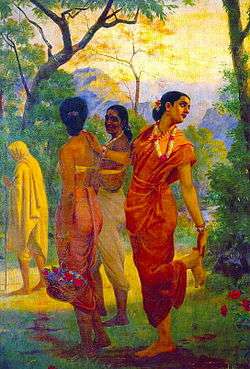
The Gupta dynasty ruled from around 240 to 550 CE. The origins of the Gupta Dynasty are shrouded in obscurity. The Chinese traveller Xuanzang provides the first evidence of the Gupta kingdom in Magadha. He came to India in 672 CE and heard of 'Maharaja Sri-Gupta' who built a temple for Chinese pilgrims near Mrigasikhavana. Ghatotkacha (c. 280–319) CE, had a son named Chandra Gupta I (Not to be confused with Chandragupta Maurya (340–293 BC), founder of the Mauryan Empire). In a breakthrough deal, Chandra Gupta I was married to a woman from Lichchhavi—the main power in Magadha.
Samudragupta succeeded Chandra Gupta I in 335, and ruled for about 45 years, until his death in 380. He attacked the kingdoms of Shichchhatra, Padmavati, Malwas, the Yaudheyas, the Arjunayanas, the Maduras and the Abhiras, and merged them in his kingdom. By his death in 380, he had incorporated over twenty kingdoms into his realm, his rule extended from the Himalayas to the river Narmada and from the Brahmaputra to the Yamuna. He gave himself the titles King of Kings and World Monarch. He is considered the Napoleon of India. Chandra Gupta I performed Ashwamedha Yajna to underline the importance of his conquest.
Chandra Gupta II, the Sun of Power (Vikramaditya), ruled from 380 until 413. Only marginally less successful than his father, Chandra Gupta II expanded his realm westwards, defeating the Saka Western Kshatrapas of Malwa, Gujarat and Saurashtra in a campaign lasting until 409. Chandragupta II was succeeded by his son Kumaragupta I. Known as the Mahendraditya, he ruled until 455. Towards the end of his reign a tribe in the Narmada valley, the Pushyamitras, rose in power to threaten the empire.
Skandagupta is generally considered the last of the great rulers.[25] He defeated the Pushyamitra threat, but then was faced with invading Hephthalites or Huna, from the northwest. He repulsed a Huna attack c. 477. Skandagupta died in 487 and was succeeded by his son Narasimhagupta Baladitya.
The Gupta Empire was one of the largest political and military empires in ancient India. The Gupta period is referred to as the Classical age of India by most historians. The time of the Gupta Empire was an "Indian Golden Age" in Indian science, technology, engineering, art, dialectic, literature, logic, mathematics, astronomy, religion and philosophy.[26]
The Gupta Empire had their capital at Pataliputra. The difference between Gupta Empire's and Mauryan Empire's administration was that in the Mauryan administration power was centralised but in the Gupta administration power was more decentralised. The empire was divided into provinces and the provinces were further divided into districts. Villages were the smallest units. The kingdom covered Gujarat, North-East India, south-eastern Pakistan, Odisha, northern Madhya Pradesh and eastern India with capital at Pataliputra, modern Patna. All forms of worship were carried out in Sanskrit.
Rapid strides were made in astronomy during this period. Aryabhata and Varahamihira were two great astronomers and mathematicians. Aryabhata stated that the earth moved round the sun and rotated on its own axis. Aryabhata, who is believed to be the first to come up with the concept of zero, postulated the theory that the Earth moves round the Sun, and studied solar and lunar eclipses. Aryabhata's most famous work was Aryabhatiya. Varahamihira's most important contributions are the encyclopaedic Brihat-Samhita and Pancha-Siddhantika (Pañcasiddhāntikā). Metallurgy also made rapid strides. The proof can be seen in the Iron Pillar of Vaishali[27] and near Mehrauli on the outskirts of Delhi, which was brought from Bihar.[28]
This period is also very rich in Sanskrit literature. The material sources of this age were Kalidasa's works. Raghuvamsa, Malavikagnimitram, Meghadūta, Abhijñānaśākuntala and Kumārasambhava, Mrichchakatika by Shudraka, Panchatantra by Vishnu Sharma, Kama Sutra (the principles of pleasure) and 13 plays by Bhasa were also written in this period.
In medicine, the Guptas were notable for their establishment and patronage of free hospitals. Although progress in physiology and biology was hindered by religious injunctions against contact with dead bodies, which discouraged dissection and anatomy, Indian physicians excelled in pharmacopoeia, caesarean section, bone setting, and skin grafting. Indeed, Hindu medical advances were soon adopted in the Arab and Western worlds. Ayurveda was the main medical system.
According to some historian's work,
The Gupta Empire is considered by many scholars to be the "classical age" of Hindu and Buddhist art and literature. The Rulers of the Gupta Empire were strong supporters of developments in the arts, architecture, science, and literature. The Gupta Empire circulated a large number of gold coins, called dinars, with their inscriptions. The Gupta Dynasty also left behind an effective administrative system. During times of peace, the Gupta Empire system was decentralised, with only taxation flowing to the capital at Pataliputra. During times of war however, the government realigned and fought its invaders. The system was soon extinguished in fighting off the Hunnic Invasions.[29][30]
The Pala Empire was a Buddhist dynasty that ruled from the north-eastern region of the Indian subcontinent. The name Pala (Modern Bengali: পাল pal) means protector and was used as an ending to the names of all Pala monarchs. The Palas were followers of the Mahayana and Tantric schools of Buddhism. Gopala was the first ruler from the dynasty. He came to power in 750 in Gaur by a democratic election. This event is recognised as one of the first democratic elections in South Asia since the time of the Mahā Janapadas. He reigned from 750-770 and consolidated his position by extending his control over all of Bengal as well as parts of Bihar. The Buddhist dynasty lasted for four centuries (750-1120 CE).
The empire reached its peak under Dharmapala and Devapala. Dharmapala extended the empire into the northern parts of the Indian Subcontinent. This triggered once again the power struggle for the control of the subcontinent. Devapala, successor of Dharmapala, expanded the empire to cover much of South Asia and beyond. His empire stretched from Assam and Utkala in the east, Kamboja (modern day Afghanistan) in the north-west and Deccan in the south. According to Pala copperplate inscription Devapala exterminated the Utkalas, conquered the Pragjyotisha (Assam), shattered the pride of the Huna, and humbled the lords of Pratiharas, Gurjara and the Dravidas.
The Palas created many temples and works of art as well as supported the Universities of Nalanda and Vikramashila. Both Nalanda University and Vikramshila University reached their peak under the Palas. The universities received an influx of students from many parts of the world. Bihar and Bengal were invaded by the south Indian Emperor Rajendra Chola I of the Chola dynasty in the 11th century.[31][32] The Pala Empire eventually disintegrated in the 12th century under the attack of the Sena dynasty. Pala Empire was the last empire of middle kingdoms whose capital was Pataliputra (modern Patna).
Medieval Period
|
|
|
Bihar was largely in ruins when visited by Xuanzang, the famous Buddhist monk from China, and suffered further damage at the hands of Muslim raiders in the 12th century.[33] With the advent of the foreign aggression and eventual foreign subjugation of India, Bihar passed through very uncertain times during the medieval period. Muhammad of Ghor attacked this region of the Indian subcontinent many times. Muhammad of Ghor's armies destroyed many Buddhist structures, including the great Nalanda university.[34]
The Buddhism of Magadha was finally swept away by the Islamic invasion under Muhammad Bin Bakhtiar Khilji, one of Qutb-ud-Din's generals destroyed monasteries fortified by the Sena armies, during which many of the viharas and the famed universities of Nalanda and Vikramshila were destroyed, and thousands of Buddhist monks were massacred in the 12th century.[35][36][37][38][39]
During the medieval period, Bihar saw a period of glory lasting about six years during the rule of Sher Shah Suri, who hailed from Sasaram. Sher Shah Suri built the longest road of the Indian subcontinent, the Grand Trunk Road, which started at Calcutta and ended at Peshawar, Pakistan. The economic reforms carried out by Sher Shah, such as the introduction of the Rupee and Custom Duties, are still used in the Republic of India. He revived the city of Patna, where he built his headquarters.[40][41]
Hemu, the Hindu Emperor, the son of a food seller, and himself a vendor of saltpetre at Rewari,[42] rose to become Chief of Army and Prime Minister[43][44] under the command of Adil Shah Suri of the Suri Dynasty. He had won 22 battles against the Afghans, from Punjab to Bengal and had defeated Akbar's forces twice at Agra and Delhi in 1556,[45] before succeeding to the throne of Delhi and establishing a 'Hindu Raj' in North India, albeit for a short duration, from Purana Quila in Delhi. He was killed in the Second Battle of Panipat.
From 1557 to 1576, Akbar the Great, the Mughal emperor, annexed Bihar and Bengal to his empire and the region passed through uneventful provincial rule during much of this period.[46] With the decline of Mughals, Bihar passed into the control of Nawabs of Bengal. This period saw Bihar's exploitation at the hands of the rulers in the form of high taxes, but the Nawabs of Bengal also allowed trade to flourish in the region. Some of the greatest melas of the Indian subcontinent, such as the Soenpur Mela, which was the biggest cattle fair in India, were allowed to continue and even flourish with traders coming from near and far.
Guru Nanak Dev visited Patna and stayed at Bhagat Jaitamal's house near in Gaighat, Patna in 1509 CE.[47] Later Guru Tegh Bahadur came to Patna with his family in 1666.[48] The 10th and the last Guru of Sikhism, Guru Gobind Singh was born at Patna Sahib, Patna in 1666.[49] Prince Azim-us-Shan, the grandson of Aurangzeb was appointed as the governor of Pataliputra in 1703.[50] Azim-us-Shan renamed Pataliputra as Azimabad, in 1704.[51][52]
The Company rule
After the Battle of Buxar, 1764, which was fought in Buxar, hardly 115 km from Patna, the Mughals as well as the Nawabs of Bengal lost effective control over the territories then constituting the province of Bengal, which currently comprises the Indian states of West Bengal, Bihar, Jharkhand, Odisha, and Bangladesh. The British East India Company was accorded the diwani rights, that is, the right to administer the collection and management of revenues of the province of Bengal, and parts of Oudh, currently comprising a large part of Uttar Pradesh. The diwani rights were legally granted by Shah Alam, who was then the sovereign Mughal emperor of India. During the rule of the British East India Company in Bihar, Patna emerged as one of the most important commercial and trading centres of eastern India, preceded only by Kolkata.
Babu Kunwar Singh of Jagdishpur and his army, as well as countless other persons from Bihar, contributed to the India's First War of Independence (1857), also called the Sepoy Mutiny by some historians. Babu Kunwar Singh (1777–1858) one of the leaders of the Indian uprising of 1857 belonged[53] to a royal Rajput house of Jagdispur, currently a part of Bhojpur district of Bihar. At the age of 80 years, during India’s First War of Independence, he actively led a select band of armed soldiers against the troops under the command of the East India Company, and also recorded victories in many battles.[54]
The British Raj
Under the British Raj, Bihar particularly Patna gradually started to attain its lost glory and emerged as an important and strategic centre of learning and trade in India. From this point, Bihar remained a part the Bengal Presidency of the British Raj until 1912, when the province of Bihar and Orissa was carved out as a separate province. When the Bengal Presidency was partitioned in 1912 to carve out a separate province, Patna was made the capital of the new province. The city limits were stretched westwards to accommodate the administrative base, and the township of Bankipore took shape along the Bailey Road (originally spelt as Bayley Road, after the first Lt. Governor, Charles Stuart Bayley). This area was called the New Capital Area. The houses of the English residents, were all at the west-end at Bankipore. The greater part of the English residences were on the banks of the river, many of them being on the northern side of an open square, which formed the parade ground, and racecourse (present Gandhi maidan). There was also the Golghar a wondrous bell-shaped building, one hundred feet high, with a winding outer staircase leading to the top, and a small entrance door at the base, which was intended for a granary, to be filled when there was the expectation of famine. It was initially considered to be both politically and materially impracticable.
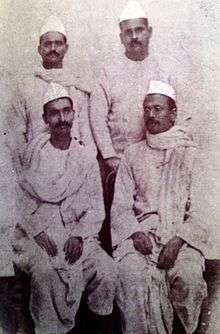
To this day, locals call the old area as the City whereas the new area is called the New Capital Area. The Patna Secretariat with its imposing clock tower and the Patna High Court are two imposing landmarks of this era of development. Credit for designing the massive and majestic buildings of colonial Patna goes to the architect, I. F. Munnings. By 1916-1917, most of the buildings were ready for occupation. These buildings reflect either Indo-Saracenic influence (like Patna Museum and the state Assembly), or overt Renaissance influence like the Raj Bhawan and the High Court. Some buildings, like the General Post Office (GPO) and the Old Secretariat bear pseudo-Renaissance influence. Some say, the experience gained in building the new capital area of Patna proved very useful in building the imperial capital of New Delhi.
The British built several educational institutions in Patna like Patna College, Patna Science College, Bihar College of Engineering, Prince of Wales Medical College and the Patna Veterinary College. With government patronage, the Biharis quickly seized the opportunity to make these centres flourish quickly and attain renown. In 1935, certain portions of Bihar were reorganised into the separate province of Orissa. Patna continued as the capital of Bihar province under the British Raj.
Independence movement
Bihar played a major role in the Indian independence struggle. Most notable were the Champaran movement against the Indigo plantation and the Quit India Movement of 1942.
After his return from South Africa, it was from Bihar that Mahatma Gandhi launched his pioneering civil-disobedience movement, Champaran Satyagraha.[55] Raj Kumar Shukla drew Mahatma Gandhi's attention to the exploitation of the peasants by the European indigo planters. Champaran Satyagraha received the spontaneous support from many Biharis, including Brajkishore Prasad, Rajendra Prasad (who became the first President of India) and Anugrah Narayan Sinha (who became the first Deputy Chief Minister and Finance Minister of Bihar).[56]
In India's struggle for independence, the Champaran Satyagraha marks a very important stage. Raj Kumar Shukla drew the attention of Mahatma Gandhi, who had just returned from South Africa, to the plight of the peasants suffering under an oppressive system established by European indigo planters. Besides other excesses they were forced to cultivate indigo on 3/20 part of their holding and sell it to the planters at prices fixed by the planters. This marked Gandhi’s entry into the India’s independence movement. On arrival at the district headquarters in Motihari, Gandhi and his team of lawyers—Dr. Rajendra Prasad, Dr. Anugrah Narayan Sinha, Brajkishore Prasad and Ram Navami Prasad, who he had handpicked to participate in the satyagraha—were ordered to leave by the next available train. They refused to do this, and Gandhi was arrested. He was released and the ban order was withdrawn in the face of a "Satyagraha" threat. Gandhi conducted an open inquiry into the peasant’s grievances. The Government had to appoint an inquiry committee with Gandhi as a member. This led to the abolition of the system.
Raj Kumar Shukla has been described by Gandhi in his Atmakatha, as a man whose suffering gave him the strength to rise against the odds. In his letter to Gandhi he wrote "Respected Mahatma, You hear the stories of others everyday. Today please listen to my story.... I want to draw your attention to the promise made by you in the Lucknow Congress that you would come to Champaran. The time has come for you to fulfill your promise. 1.9 million suffering people of Champaran are waiting to see you."
Gandhi reached Patna on 10 April 1917 and on 16 April he reached Motihari accompanied by Raj Kumar Shukla. Under Gandhi’s leadership the historic "Champaran Satyagraha" began. The contribution of Raj Kumar Shukla is reflected in the writings of Dr. Rajendra Prasad, first President of India, Anugrah Narayan Sinha, Acharya Kriplani and Mahatma Gandhi. Raj Kumar Shukla maintained a diary in which he gave an account of struggle against the atrocities of the indigo planters, atrocities so movingly depicted by Dinabandhu Mitra in Nil Darpan, a play that was translated by Michael Madhusudan Dutt. This movement by Mahatma Gandhi received the spontaneous support of a cross section of people, including Dr. Rajendra Prasad, Bihar Kesari Sri Krishna Sinha, Dr. Anugrah Narayan Sinha and Brajkishore Prasad.
Shaheed Baikuntha Shukla was another nationalist from Bihar, who was hanged for murdering a government approver named Phanindrananth Ghosh. This led to the hanging of Bhagat Singh, Sukhdev and Rajguru. Phanindranath Ghosh hitherto a key member of the Revolutionary Party had betrayed the cause by turning an approver and giving evidence, which led to his murder. Baikunth was commissioned to plan the murder of Ghosh. He carried out the killing successfully on 9 November 1932. He was arrested, tried, convicted, and, on 14 May 1934, he was hanged in Gaya Central Jail.
In North and Central Bihar, a peasant movement was an important side effect of the independence movement. The Kisan Sabha movement started in Bihar under the leadership of Swami Sahajanand Saraswati who in 1929 had formed the Bihar Provincial Kisan Sabha (BPKS) to mobilise peasant grievances against the zamindari attacks on their occupancy rights.[57] Gradually the peasant movement intensified and spread across the rest of India. All these radical developments on the peasant front culminated in the formation of the All India Kisan Sabha (AIKS) at the Lucknow session of the Indian National Congress in April 1936, with Swami Sahajanand Saraswati elected as its first President.[58] This movement aimed at overthrowing the fedual zamindari system instituted by the British. It was led by Swami Sahajanand Saraswati and his followers Pandit Yamuna Karjee, Rahul Sankrityayan and others. Pandit Yamuna Karjee along with Rahul Sankrityayan and other Hindi literaries started publishing a Hindi weekly Hunkar from Bihar in 1940. Hunkar later became the mouthpiece of the peasant movement and the agrarian movement in Bihar and was instrumental in spreading the movement. The peasant movement later spread to other parts of the country and helped in digging out the British roots in the Indian society by overthrowing the zamindari system.
Bihar's contribution in the independence movement has been immense with famous leaders like Swami Sahajanand Saraswati,[59] Shaheed Baikuntha Shukla, Bihar Bibhuti Anugrah Narayan Sinha, Mulana Mazharul Haque, Loknayak Jayaprakash Narayan, Satyendra Narayan Sinha (Singh), Basawon Singh (Sinha), Yogendra Shukla, Sheel Bhadra Yajee, Pandit Yamuna Karjee, Dr. Maghfoor Ahmad Ajazi and many others who worked for India's indepdence and worked to lift up the underprivileged masses. Khudiram Bose, Upendra Narayan Jha "Azad" and Prafulla Chaki were also active in revolutionary movement in Bihar.
Towards the end of 1946, between 30 October and 7 November, a large-scale massacre of Muslims in Bihar made Partition more likely. Begun as a reprisal for the Noakhali riot, whose death toll had been greatly overstated in immediate reports, it was difficult for authorities to deal with because it was spread out over a large number of scattered villages, and the number of casualties was impossible to establish accurately: "According to a subsequent statement in the British Parliament, the death-toll amounted to 5,000. The Statesman's estimate was between 7,500 and 10,000; the Congress party admitted to 2,000; Mr. Jinnah claimed about 30,000."[60]
The first Cabinet of Bihar was formed on 2 April 1946, consisting of two members, Dr. Sri Krishna Sinha as the first Chief Minister of Bihar and Dr. Anugrah Narayan Sinha as Deputy Chief Minister and Finance Minister of Bihar (also in charge of Labour, Health, Agriculture and Irrigation).[61][62][63] Other ministers were inducted later. The Cabinet served as the first Bihar Government after independence in 1947. In 1950, Dr. Rajendra Prasad from Bihar became the first President of India.
Recent Events
The 1974 smallpox epidemic of India occurred primarily in Bihar and a few other Indian states, killing thousands of people. The state of Jharkhand was carved out of Bihar in the year 2000.[64] 2005 Bihar assembly elections ended the 15 years of continuous RJD rule in the state, giving way to NDA led by Nitish Kumar. Bihari migrant workers have faced violence and prejudice in many parts of India, like Maharashtra, Punjab and Assam.[65][66][67] To mark the separation of Bihar from Bengal on 22 March 1912, the completion of 100 years of existence is being celebrated in the name of Bihar Shatabadi Celebration Utsav.[68] There was a political crisis over post of the chief minister during February 2015.
Timeline for Bihar
- 560–480 BCE: Anga, Buddha
- 490 BCE: Establishment of Pataliputra (Modern Patna)
- Before 325 BCE: Anga, Nanda clan in Magadha, Licchavis in Vaishali
- Before 500 BCE: Foundation of world's first republic in Vaishali.
- 450–362 BCE: Emperor Mahapadma Nanda is ruler of the Magadh Empire, Nanda Dynasty; Start of the Golden Age of Bihar
- 304 BCE: Ashok Maurya born in Pataliputra
- 325–185 BCE: Magadh Empire under the Maurya Dynasty
- 340 BCE: General Chandragupta Maurya crowned Emperor of Magadh; Chandragupta is the first Mauryan emperor
- 273 BCE: Ashok Maurya crowned new Emperor of Magadh, Bihari-Magadhi Buddhism is exported to Persian Empire, Greece, China and East Asia
- 273–232: Conquest of 'Indian' region by Ashok the Great (Modern Afghanistan, Pakistan, southern India, and Gujarat) falls under Magadh territories and taxation system.
- 232 BCE: Death of Emperor Ashok Maurya
- 250 BCE: 3rd Buddhist Council
- 185 BCE–80 CE: The Magadha Empire falls under the Shunga Dynasty after the military coup by General Pushyamitra Shunga.
- 71–26 BCE: Magadh Empire falls under the Kanva dynasty
- 240–600 CE: Magadh Empire falls under the Gupta Dynasty. First ruler is Chandra Gupta
- 375–415: Emperor Chandragupta II
- 500: Attack by Huns weakens the Imperial centre in Pataliputra. Provinces break away. End of the Bihari Golden Age
- 600–650: Harsha Vardhana empire expands into Magadh from the Haryana region
- 750–1200: The Bengali Pala Dynasty Expands into Magadh
- 1200: Bakhtiyar Khilji's army destroys the Buddhist universities at Nalanda and Vikramshila in Bihar. Start of the Muslim Era.
- 1200–1400: Sharp decline of Buddhism in Bihar and northern India in general
- 1250–1526: Magadh becomes a core part of the Delhi Sultanate e Hind (Hindustan).
- 1526–1540: Mughal Emperor, Babur, defeats the last Sultan of Delhi, Lodi, and establishes the Mughal Dynasty in Delhi and Agra
- 1540–1555: New empire from Bihar (Magadh), with Shenshah SherShah Suri (from Sasaram, modern south Bihar). SherShah captures empire from Mughals. (SherShah built the Grand Trunk Road, introduced the Rupee and Custom Duties)
- 1556: Hindu King Hem Chandra Vikramaditya popular as Hemu wins Agra and Delhi independently as a Vikramaditya King and declares Hindu rule in North India
- 1556: Mughal dynasty restored in Agra after the Battle of Panipat, centre of power moves back to Delhi-Agra region
- 1556–1764: Bihar is a wealthy, core territory/ province of the Mughal Sultanate-e-Hind (Hindustan)
- 1666: Guru Gobind Singh The 10th and last Sikh Guru, is born in Patna
- 1757–1857: The British East India Company expands it rule into Bihar from Bengal
- 1764: Battle of Buxar, Core lands of Mughal Hindustan are put firmly under British Company government. Tax collection rights are now a duty of the Company.
- 1764–1920: Migration of Bihari & United Provinces (Eastern Uttar Pradesh) workers across the British Empire by the Company and later Crown Government. Bihari migrant population dominate and settle in Guyana, Surinam, Trinidad-Tobago, Fiji, Mauritius, and Natal-South Africa. Smaller settler colonies also established in Jamaica and West Indies in general.
- 1857: Period of the north Indian Rebellion of 1857 Bihari, Purvanchli, & Western UP East India Company Sepoys (80% Hindu according to William Daryample in the book "The Last Mughal") declare Bahadur Shah Zafar II Emperor of Hindustan. The region becomes the centre of resistance to the East India Company. End of the Muslim Era.
- 1858: Mughal Sultanate-e-Hind reorganised to form the new British Indian Empire after the British Government abolishes the East India Company. Start of the British Age
- 1877: House of Windsor is made the new Imperial Royal Family. Queen Victoria declared the first Empress of the British Indian Empire
- 1912: Province of Bihar and Orissa separated from Bengal
- 1913: Start of the dramatic slowdown in wealth creation in India and Bihar
- 1916: Patna High Court founded
- 1917: Mahatma Gandhi arrives in Champaran with a team of[69] eminent lawyers:[70] Brajkishore Prasad, Rajendra Prasad, Anugrah Narayan Sinha and others.[69] The Champaran Satyagraha movement is launched. Establishment of Patna University.
- 1925: Patna Medical College Hospital established under the name "Prince of Wales Medical College"
- 1935: 1935 Government of India Act federates the Indian Empire and creates a new Bihar. End of the British Age.
- 1936: Sir James David Sifton appointed the first Governor of Bihar.
- 1937: Formation of[71] first Congress government in Bihar under provincial autonomy granted by British rule, Dr. Sri Krishna Sinha sworn[72] in as Chief Minister and Dr. Anugrah Narayan Sinha became[73] Deputy Chief Minister cum Finance Minister.
- 1942: Quit India Movement.
- 1946: First Cabinet of Bihar formed, consisting[61] of two members: Dr. Sri Krishna Sinha as first Chief Minister of Bihar and Dr. Anugrah Narayan Sinha[62] as Bihar's first Deputy Chief Minister cum Finance[74] Minister(also in charge of Labour, Health, Agriculture and Irrigation).Other ministers were inducted later.
- 1947: Indian Independence; Bihar becomes a state in the new Dominion of India. Religious violence leads to the migration of millions of Bihari Muslims to the new Pakistani states of Sindh and East Pakistan (East Pakistan known as Bangladesh since 1971).
- 1947–1950: The Dominion of India is replaced by a republic in 1950. Central Government adopts symbols of ancient Imperial Bihar (Ashok Chakra added to the Indian flag, the Lion Pillor is made the symbol of the central government of India, all state governments, reserve bank, and the military, whilst the Bihari Rupee is retained as the currency)
- 1950: Enactment of Land Reforms bill in Bihar, and abolishment of Zamindari system.
- 1952:Many development projects needed for the all round development of the state initiated, be it on irrigation front or on industrial front by the state government.[75] It included several river valley projects right from Koshi, Aghaur and Sakri to several other such river projects.[76]
- 1952-57:Bihar rated as the best administered among the states in the country.[77]
- 1955 The Birla Institute of Technology(BIT) is established[78] at Mesra, Ranchi.
- 1957-62:Second five-year plan period, Bihar government brought several heavy industries like Barauni Oil Refinery, HEC plant at Hatia, Bokaro Steel Plant, Barauni Fertiliser Plant, Barauni Thermal Power Plant, Maithon Hydel Power Station, Sulphur mines at Amjhaur, Sindri Fertiliser Plant, Kargali Coal Washery, Barauni Dairy Project, etc. for the all round development of the state.[79]
- 1963–1967: Sri Krishna Ballabh Sahay became Chief Minister of Bihar by defeating his contestant Mahesh Prasad Sinha with support of Satyendra Narain Sinha. In his term of government, the state underwent further massive industrialisation.
- 1973: Indian wealth creation begins to recover; surge in all India GDP starts again.
- 1975–1977: Suspension of the Republican Constitution. Bihar is the centre of resistance against the Emergency. Janata Party Came to power at Centre and in Bihar; Karpoori Thakur became CM after winning chief minister-ship battle from the[80] then Janata Party President Satyendra Narayan Sinha.
- 1984: Indira Gandhi Assassination leads to deadly anti-Sikh Riots in northern India, including Bihar
- 1988-1990: Unceremonious removal of Bihar CM Bhagwat Jha Azad, Veteran[81] Leader Satyendra Narayan Singh sworn in as Chief Minister of Bihar, Lalu Prasad Yadav became Leader Of Opposition.
- 1990–2005: Lalu Prasad/ Rabri Devi term of Government (RJD Party). Period marks the complete collapse of the Bihar economy, massive rise in crime, and the development of mass migration to other states in Indian Union of all classes/ castes and religions.
- 1992: Bihar escapes severe rioting after the destruction of Babri Masjid.
- 2000: Bihar divided into two states by NDA central government - The northern part retains the name "Bihar", whilst southern (and more industralised region) becomes the State of Jharkhand.
- 2002–2004: Deadly crime wave grips Patna and Bihar
- 2003: First Bihari-Bhojpuri Immigrant Worker Crisis; Bihari migrants attacked in Mumbai, and hundreds killed and tens of thousands flee Assam
- 2005: In Feb, Lalu Prasad/ Rabri Devi lose power after 15 years, Presidents rule declared after no party wins overall majority in lower house
- 2005: In November, Janta Dal (United) with the BJP wins the state election with a working majority. Nitish Kumar becomes the first NDA Chief Minister of Bihar.
- 2005–2007: Nitish Kumar is declared the best Chief Minister in India by the India Today magazine
- 2007: First Global Meet for a "Resurgent Bihar" was organised in Patna.President APJ Abdul Kalam inaugurated the meet.Bhojpuri cinema hall complex bombed in Punjab. 6 UP and Bihari migrant workers killed.
- 2008: Second Bihari-Bhojpuri Immigrant Worker Crisis: Migrants killed in racially motivated hate attacks in Maharashtra, Assam, Manipur, and Nagaland. Hundreads of thousands flee back to Bihar and UP's Purvanchal territory. Bihar economy makes remarkable recovery in Q1 2008, resulting in labour shortages in Punjab, Maharashtra.[82]
See also
Gallery
 Pataliputra as a capital of Maurya Empire.
Pataliputra as a capital of Maurya Empire.
The Maurya Empire at its largest extent under Ashoka the Great. Pataliputra as a capital of Shunga Empire.
Pataliputra as a capital of Shunga Empire.
Approximate greatest extent of the Shunga Empire (c. 185 BCE).- Pataliputra as a capital of Gupta Empire. Approximate greatest extent of the Gupta Empire.
 Pataliputra as a capital of Pala Empire. Approximate extent of the Pala Empire in 800 CE.
Pataliputra as a capital of Pala Empire. Approximate extent of the Pala Empire in 800 CE. Pataliputra as a capital of Sher Shah's Empire.
Pataliputra as a capital of Sher Shah's Empire.
Further reading
- Swami Sahajanand Saraswati Rachnawali (Selected works of Swami Sahajanand Saraswati) in Six volumes published by Prakashan Sansthan, Delhi, 2003.
- Swami Sahajanand and the Peasants of Jharkhand: A View from 1941 translated and edited by Walter Hauser along with the unedited Hindi original (Manohar Publishers, paperback, 2005).
- Sahajanand on Agricultural Labour and the Rural Poor translated and edited by Walter Hauser (Manohar Publishers, paperback, 2005).
- Religion, Politics, and the Peasants: A Memoir of India's Freedom Movement translated and edited by Walter Hauser (Manohar Publishers, hardbound, 2003).
- Pandit Yadunandan (Jadunandan) Sharma, 1947, Bakasht Mahamari Aur Uska Achook Ilaaz (Bakasht Epidemic and its Infalliable Remedy) in Hindi, Allahabad.
- Indradeep Sinha, 1969, Sathi ke Kisanon ka Aitihasic Sangharsha (Historic Struggle of Sathi Peasants), in Hindi, Patna.
- Das Arvind N., The republic of Bihar, Penguin Books, 1992,
- George A. Grierson (1885). Bihar Peasant Life. Bengal Secretariat Press, Calcutta.
- Mishra Shree Govind, History Of Bihar 1740-1772, Munshiram Manoharlal, 1970
- Verma B S, Socio-religious Economic And Literary Condition Of Bihar (From ca. 319 A.D. to 1000 A.D.), Munshiram Manoharlal, 1962
- Naipaul V S, India: A Wounded Civilization, Picador, 1977
- Trevithick Alan, The Revival Of Buddhist Pilgrimage At Bodh Gaya (1811–1949): Anagarika Dharmapala And The Mahabodhi Temple
- Omalley L S S, History Of Magadh, Veena Publication, 2005, ISBN 81-89224-01-8
- Ahmad Qeyamuddin, Patna Through The Ages: Glimpses of History, Society & Economy, Commonwealth Publishers,1988
- Crindle John W Mc, Ancient India As Described By Ptolemy, Munshiram Manoharlal, 1927, ISBN 81-215-0945-9
- Patra C, Life In Ancient India: As Depicted In The Digha Nikaya, Punthi Pustak, 1996, ISBN 81-85094-93-4
- Hazra Kanai Lal, Buddhism In India As Described By The Chinese Pilgrims AD 399-689, Munshiram Manoharlal, 1983, ISBN 81-215-0132-6
- Mccrindle John W, Ancient India As Described By Megasthenes And Arrian, Munshiram Manoharlal
- Waddell, Austine L., Report On The Excavations At Pataliputra (Patna) - The Palibothra Of The Greeks, Asian Publicational Services, Calcutta, 1903
- Brass Paul R., The politics of India since Independence, Cambridge University Press, 1990
- Askari S. H., Medieval Bihar: Sultante and Mughal Period, Khuda Bakhsh Oriental Public Library, Patna, 1990
- Tayler William, Three Months at Patna during the Insurrection of 1857, Khuda Bakhsh Oriental Public Library, Patna, 2007
- Taylor P.J.O., What really happened during the Mutiny: A day by day account of the major events of 1857-1859 in India, Oxford University Press, 1997, ISBN 0-19-564182-5
- Basham A. L., The Wonder that was India, Picador, 1954, ISBN 0-330-43909-X
- Nambisan Vijay, Bihar in the eye of the beholder, Penguin Books, 2000, ISBN 978-0-14-029449-1
- Radhakanta Barik - Land & Caste Politics in Bihar (Shipra Publications, Delhi, 2006)
References
- ↑ Mishra Pankaj, The broblem, Seminar 450 - February 1997
- ↑ "The History of Bihar". Bihar Government website.
- ↑ "Licchavi", Encyclopædia Britannica Online Archived 23 December 2008 at the Wayback Machine.
- 1 2 3 "Vaisali", Encyclopædia Britannica Online Archived 23 December 2008 at the Wayback Machine.
- ↑ http://yac.bih.nic.in/Da-01.htm Prehistoric era in Bihar
- ↑ http://discoverbihar.bih.nic.in/pages/art_craft.htm#Rock%20Paintings Rock painting at Kaimur
- ↑ http://kaimur.com/ discovery of rock paintings
- ↑ Krishna Reddy (2003). Indian History. New Delhi: Tata McGraw Hill. pp. A107. ISBN 0-07-048369-8.
- ↑ Mary Pat Fisher (1997) In: Living Religions: An Encyclopedia of the World's Faiths I. B. Tauris : London ISBN 1-86064-148-2 - Jainism's major teacher is the Mahavira, a contemporary of the Buddha, and who died approximately 526 BCE. Page 114
- ↑ Mary Pat Fisher (1997) In: Living Religions: An Encyclopedia of the World's Faiths I. B. Tauris : London ISBN 1-86064-148-2 - "The extreme antiquity of Jainism as a non-vedic, indigenous Indian religion is well documented. Ancient Hindu and Buddhist scriptures refer to Jainism as an existing tradition which began long before Mahavira." Page 115
- ↑ Bindloss, Joe; Sarina Singh (2007). India: Lonely planet Guide. Lonely Planet. p. 556. ISBN 1-74104-308-5.
- ↑ Hoiberg, Dale; Indu Ramchandani (2000). Students' Britannica India, Volumes 1-5. Popular Prakashan. p. 208. ISBN 0-85229-760-2.
- ↑ Kulke, Hermann; Dietmar Rothermund (2004). A history of India. Routledge. p. 57. ISBN 0-415-32919-1.
- ↑ Vin.i.268
- ↑ Radha Kumud Mookerji, Chandragupta Maurya and His Times, 4th ed. (Delhi: Motilal Banarsidass, 1988 [1966]), 31, 28–33.
- ↑ The Edicts of Ashoka are a collection of 33 inscriptions on the Pillars of Ashoka
- ↑ "The First Indian Empire". History-world.org. Retrieved 2012-08-15.
- ↑ http://www.buddhistchannel.tv/index.php?id=4,2658,0,0,1,0 Edicts of Ashoka at Shahbaz Garhi are among the oldest historical "documents" found on the subcontinent.
- ↑ http://www.cs.colostate.edu/~malaiya/ashoka.html Edicts of Ashoka, which comprise the earliest decipherable corpus of written documents from India, have survived throughout the centuries because they are written on rocks and stone pillars.
- ↑ According to the Ashokavadana.
- ↑ Sir John Marshall, "A Guide to Sanchi", Eastern Book House, 1990, ISBN 81-85204-32-2, pg.38
- ↑ E. Lamotte: History of Indian Buddhism, Institut Orientaliste, Louvain-la-Neuve 1988 (1958)
- ↑ Aśoka and the Decline of the Mauryas by Romila Thapar, Oxford University Press, 1960 P200
- ↑ Cooke (1997). "The Mathematics of the Hindus". p. 204.
Aryabhata himself (one of at least two mathematicians bearing that name) lived in the late 5th and the early 6th centuries at Kusumapura (Pataliutra, a village near the city of Patna) and wrote a book called Aryabhatiya.
Missing or empty|title=(help) - ↑ "Skanda Gupta (Gupta ruler) - Britannica Online Encyclopaedia". Britannica.com. Retrieved 2012-08-15.
- ↑ Golden Age of India Archived 4 December 2008 at the Wayback Machine.
- ↑ "Creative Metal Work,Metal Origins History,Metal Work Techniques". Indiaheritage.org. Retrieved 2012-08-15.
- ↑ Story of the Delhi Iron Pillar. By R. Balasubramaniam. Published by Foundation Books, 2005. ISBN 81-7596-278-X, 9788175962781
- ↑ Omalley L S S, History Of Magadh, Veena Publication, 2005, ISBN 81-89224-01-8
- ↑ Cultural Pasts: Essays in Early Indian History, 2003; Oxford University Press, ISBN 0-19-566487-6
- ↑ The Making of India by A. Yusuf Ali p.60
- ↑ The Cambridge Shorter History of India p.145
- ↑ Scott, David (May 1995). "Buddhism and Islam: Past to Present Encounters and Interfaith Lessons". Numen. 42 (2): 141–155. doi:10.1163/1568527952598657. JSTOR 3270172.
- ↑ Historia Religionum: Handbook for the History of Religions By C. J. Bleeker, G. Widengren page 381
- ↑ Gopal Ram, Rule Hindu Culture During and After Muslim, pp. 20, "Some invaders, like Bakhtiar Khilji, who did not know the value of books and art objects, destroyed them in large numbers and also the famous Nalanda ..."
- ↑ The Maha-Bodhi By Maha Bodhi Society, Calcutta (page 8)
- ↑ Omalley L.S.S., History of Magadha, Veena Publication, Delhi, 2005, pp. 35.
- ↑ Smith V. A., Early history of India
- ↑ Islam at War: A History By Mark W. Walton, George F. Nafziger, Laurent W. Mbanda (page 226)
- ↑ Omalley L.S.S., History of Magadha, Veena Publication, Delhi, 2005, pp. 36, "Sher Shah on his return from Bengal, in 1541, came to patna, then a small town dependent on Bihar, which was the seat of the local government. He was standing on the ban of the Ganges, when, after much reflection, he said to those who were standing by, "If a fort were to be built in this place, the waters of the Ganges could never flow far from it, and Patna would become one of the great towns of this country." The fort was completed. Bihar for that time was deserted, and fell to ruin; while Patna became one of the largest cities of the province. In 1620 we find Portuguese merchants at Patna; and Tavernier's account shows that a little more the a century after its foundation it was the great entrepot of Northern India "the largest town in Bengal and the most famous for trade..."
- ↑ Elliot, History of India, Vol 4
- ↑ Tripathi, R. P. "Rise and Fall of Mughal Empire", Allahabad (1960), p,.158
- ↑ De Laet, "The Empire of the Great Mogul", pp.140-41
- ↑ Ahmed, Nizamuddin. "Tahaqat-i-Akbari", Vol.II, p.114
- ↑ Bhardwaj, K. K. "Hemu-Napoleon of Medieval India", Mittal Publications, New Delhi, p.25
- ↑ Omalley L.S.S., History of Magadha, Veena Publication, Delhi, 2005, pp. 37
- ↑ "Takhat Shri Harimandirji Patna Sahib, Bihar". Takhatpatnasahib.com. Retrieved 2012-08-15.
- ↑ "Gurdwara Guru Ka Bagh". Takhatpatnasahib.com. Archived from the original on 17 February 2012. Retrieved 2012-08-15.
- ↑ Owen Cole, William; Piara Singh Sambhi (1995). The Sikhs: Their Religious Beliefs and Practice. Sussex Academic Press. p. 36.
- ↑ "Patna at a Glance". Drdapatna.bih.nic.in. Retrieved 2012-08-15.
- ↑ Archived 5 February 2009 at the Wayback Machine.
- ↑ Gilani, Najam (2007-02-07). "Thus Spoke Laloo Yadav". Archived from the original on 2008-05-17.
- ↑ Original Author: Ankur Bhadauria. "Veer Kunwar Singh - Hero of 1857 revolts against British imperialists. (By Ankur Bhadauria)". Shvoong.com. Retrieved 2012-08-15.
- ↑ "History of Bhojpur". Bhojpur.bih.nic.in. Archived from the original on 14 June 2012. Retrieved 2012-08-15.
- ↑ Brown (1972). Gandhi's Rise to Power, Indian Politics 1915-1922: Indian Politics 1915-1922. New Delhi: Cambridge University Press Archive. p. 384. ISBN 978-0-521-09873-1.
- ↑ Indian Post. "First Bihar Deputy CM cum Finance Minister; Dr. A. N. Sinha". official Website. Retrieved 2008-05-20.
- ↑ Bandyopādhyāya, Śekhara (2004). From Plassey to Partition: A History of Modern India. Orient Longman. pp. 523 (at p 406). ISBN 978-81-250-2596-2.
- ↑ Bandyopādhyāya, Śekhara (2004). From Plassey to Partition: A History of Modern India. Orient Longman. pp. 523 (at p 407). ISBN 978-81-250-2596-2.
- ↑ Kamat. "Great freedom Fighters". Kamat's archive. Retrieved 2006-02-25.
- ↑ Ian Stephens, Pakistan (New York: Frederick A. Praeger, 1963), p. 111.
- 1 2 S Shankar. "The Sri Babu-Anugrah babu government". website. Retrieved 2005-04-08. Archived 27 May 2013 at the Wayback Machine.
- 1 2 Kamat. "Anugrah Narayan Sinha". Kamat's archive. Retrieved 2006-11-25.
- ↑ Dr. Rajendra Prasad's Letters to Anugrah Narayan Sinha (1995). First Finance cum Labour Minister. Rajendra Prasad's archive. ISBN 978-81-7023-002-1. Retrieved 2007-06-25.
- ↑ "Britannica Online Encyclopedia". Britannica.com. Retrieved 2012-08-15.
- ↑ Kumod Verma (14 February 2008). "Scared Biharis arrive from Mumbai". The Times of India. Retrieved 2008-02-14.
- ↑ Wasbir Hussain. "30 Killed in Northeast Violence in India". Washington Post. Retrieved 2006-02-25.
- ↑ Patnadaily (2007-01-06). "40 Bihari Workers Killed by ULFA Activists in Assam". Patnadaily.com. Archived from the original on 2009-02-11. Retrieved 2006-01-06.
- ↑ The Hindu (20 March 2012). "Bihar's growth brought down migration of labourers: Nitish". The Hindu. Retrieved 2012-03-20.
- 1 2 aicc. "SATYAGRAHA MOVEMENT OF MAHATMA GANDHI". aicc. Archived from the original on 6 December 2006. Retrieved 2006-12-08.
- ↑ aicc. "SATYAGRAHA MOVEMENT". aicc. Archived from the original on 25 June 2008. Retrieved 2008-07-08.
- ↑ S Shankar. "First Congress Government:1937". website. Archived from the original on 6 December 2006. Retrieved 2006-12-08.
- ↑ "Dr. S. K. Sinha". official website. Retrieved 2008-01-03.
- ↑ Kamat. "1937:A. N. Sinha, Finance Minister". Kamat's archive. Retrieved 2004-01-04.
- ↑ Dr. Rajendra Prasad's Letters to Anugrah Narayan Sinha (1984). First Finance cum Labour Minister. Rajendra Prasad's archive. ISBN 978-81-7023-002-1. Retrieved 2007-06-25.
- ↑ . TOI. 1 January 1998 (Fifty year special issue). Check date values in:
|date=(help); Missing or empty|title=(help); - ↑ "Bihar's first exemplary government". The Times of India. (Fifty year special issue). Check date values in:
|date=(help); - ↑ "Bihar was once best administrated state during first government's tenure under sri babu:Nitish Kumar". The Hindustan Times. 15 December 2009. Archived from the original on 2011-06-06. Retrieved 2009-12-15.
- ↑ Official Website BIT. "1955:BIT Mesra is founded". BIT. Retrieved 2008-10-20.
- ↑ "Bihar's first exemplary government". The Times of India. 1 January 1998 (Fifty year special issue). Check date values in:
|date=(help); - ↑ Bihar chief ministership battle 1977. Website. 1 June 2003. ISBN 978-81-7017-061-7. Retrieved 2007-06-04.
- ↑ A.J. Philip. "A gentleman among politicians:Chhote Saheb". The Tribune. Retrieved 2006-09-05.
- ↑ Goswami, Urmi A (17 June 2008). "Biharis get work at home, bashers realise their worth". The Economic Times. Retrieved 2008-06-17.

